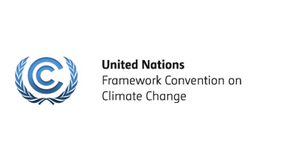New Delhi: With much bolder new national climate plans from every country due next year, a UN report on Monday showed stark but not surprising facts that current national climate plans fall miles short of what’s needed to stop global heating from crippling every economy, and wrecking billions of lives and livelihoods across every country.
By contrast, much bolder new national climate plans can not only avert climate chaos — done well, they can be transformational for people and prosperity in every nation, said the 2024 Nationally Determined Contributions (NDC) Synthesis Report released by the United Nations Framework Convention on Climate Change (UNFCCC) in the run-up to the 29th Conference of the Parties (COP29) taking place in Azerbaijan in November.
Bolder new climate plans are vital to drive stronger investment, economic growth and opportunity, more jobs, less pollution, better health and lower costs, and more secure and affordable clean energy, among many other benefits.
As expected, with countries currently working to put together new NDCs due next year, this year’s report shows only fractional progress compared to what is expected — and urgently needed — next year.
Current plans combined, if fully implemented, would see emissions of 51.5 gigatonnes of CO2 equivalent in 2030 — a level only 2.6 per cent lower than in 2019.
Greenhouse gas pollution at these levels will guarantee a human and economic trainwreck for every country, without exception.
The Intergovernmental Panel on Climate Change notes that greenhouse gas emissions need to be cut 43 per cent by 2030, compared to 2019 levels. By 2035, net global greenhouse gas emissions need to be cut by 60 per cent compared to 2019 levels. This is critical to limiting global heating to 1.5 degrees Celsius this century to avert the worst climate impacts.
Every fraction of a degree matters, as climate disasters get rapidly worse.
The next round of national climate plans must deliver a dramatic step up in climate action and ambition.
While these plans are not one-size-fits-all and are nationally determined, they all need to pass the ABC test: They must have ambitious new emissions targets that are economy-wide, covering all greenhouse gases, and keeping 1.5 degrees alive.
They must be broken down into sectors and gases and they must be credible, backed up by substantive regulations, laws, and funding to ensure goals are met and plans implemented.
New NDCs should also detail adaptation priorities and investments to protect critical sectors, infrastructure and people from climate impacts, and support and align with National Adaptation Plan processes.
They should have a time horizon to 2035, with much stronger 2030 targets to drive the deep emissions cuts needed globally this decade.
UN Climate Change — working closely with the wider UN system — is providing a range of practical support, particularly for vulnerable and developing countries, recognizing the severe capacity constraints and other headwinds that many face.
As these new national climate plans will be among the most important policy documents so far this century, therefore UN Climate Change will deliver a series of events next year to support countries’ delivery of NDCs and engage the global public in the conversation about their delivery. Further details will be announced at COP29, a vital moment in the world’s climate fight, and today’s data is a blunt reminder of why COP29 must stand and deliver.
Governments must come to Baku ready to convert the pledges in the UAE Consensus at COP28 — tripling renewables, the global goal on adaptation, transitioning away from all fossil fuels — into real-world, real-economy results, protecting people and their livelihoods everywhere.
COP29 must be an enabling COP, delivering concrete and ambitious outcomes on climate finance that take account of developing country needs, recognising that such support is core business to protect every nation and the global economy from rampaging climate impacts.
The last generation of NDCs set the signal for unstoppable change. New NDCs next year must outline a clear path to make it happen — by scaling up renewable energy, strengthening adaptation and accelerating the transition to low-carbon economies everywhere.
–IANS


Comments are closed.